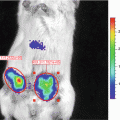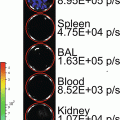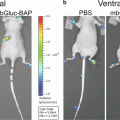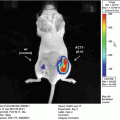, Tingting Xu3, Steven Ripp4 and Gary Sayler3
(1)
Biosciences Division, Oak Ridge National Laboratory, Oak Ridge, TN, USA
(2)
The Joint Institute for Biological Sciences, The University of Tennessee, Knoxville, TN, USA
(3)
The Joint Institute for Biological Sciences and The Center for Environmental Biotechnology, The University of Tennessee, Knoxville, TN, USA
(4)
The Center for Environmental Biotechnology, The University of Tennessee, Knoxville, TN, USA
Abstract
Cellular population dynamics are routinely monitored across many diverse fields for a variety of purposes. In general, these dynamics are assayed either through the direct counting of cellular aliquots followed by extrapolation to the total population size, or through the monitoring of signal intensity from any number of externally stimulated reporter proteins. While both viable methods, here we describe a novel technique that allows for the automated, non-destructive tracking of cellular population dynamics in real-time. This method, which relies on the detection of a continuous bioluminescent signal produced through expression of the bacterial luciferase gene cassette, provides a low cost, low time-intensive means for generating additional data compared to alternative methods.
Key words
Bacterial luciferase lux Optical imagingCell culturePopulation trackingScreening1 Introduction
Monitoring the dynamics of a cultured eukaryotic cellular population can be useful for determining the presence of estrogenic [1] or androgenic compounds [2], determining drug efficacy [3], toxicity screening [4], or a host of other [5]. While data generated from this type of experiment is straightforward and highly reliable, the main detraction of this technique has been its inability to provide real time data that can be monitored in an automated fashion [6]. This restriction, however, is not a functional limitation of the assay logistics, but rather is due to the nature of the reporter systems that have been employed to visualize the subject cells. Direct cell counting provides a means to overcome this hurdle, but has proven to be prohibitive due to the large investment of time associated with the calculation of cell density in an aliquot of the total population and the related likelihood of error that is encountered when extrapolating this number to an estimate of total population size. Therefore, the use of optical reporters such as firefly luciferase or GFP remains as the preeminent method for assaying cell population dynamics. However, while these reporter systems allow for the determination of cellular population size with a high level of accuracy, neither are amenable to real-time dynamics tracking. In the case of firefly luciferase, this is because sample destruction is required prior to data acquisition in order to treat the cells with an expensive chemical luciferin that induces bioluminescent production. GFP, on the other hand, emits a fluorescent output signal that does not require the destruction of the cell, but is limited due to the relatively high level of background fluorescence present in eukaryotic cells during the imaging process, which results in a low signal-to-noise ratio and decreases the sensitivity of the assay [7–8].
To circumvent these detractions, cells can be tagged via expression of a modified bacterial luciferase (lux) gene cassette. The genes of the lux cassette (luxCDABEfrp) encode both a luciferase protein and the additional proteins capable of generating all required substrates for its function [9]. Therefore, when the full complement of lux genes are expressed simultaneously within a cell, it becomes capable of generating a constitutively active bioluminescent signal that can be continuously monitored across any experimentally relevant timeframe.
2 Materials
2.1 Cell Culture Medium
The exact composition of cell culture medium will be dependent on the cell line being used. In our hands this procedure has been successful regardless of the medium used, so it is therefore recommended that the cell culture medium suggested by the cell manufacturer be used throughout the course of the experiment (see Note 1).
2.2 Transfection Reagents
1.
Opti-MEM Reduced Serum Medium (Life Technologies).
2.
Lipofectamine 2000 transfection reagent (Life Technologies) (see Note 2).
3.
Plasmid vector DNA containing the full lux gene cassette (luxCDABEfrp) in its human-optimized form (see Note 3).
4.
Plasmid vector DNA containing only the luxA and luxB genes and their associated linker region.
2.3 Reagents for the Selection of Successfully Transfected Cells
1.
Light assay reagent (see Note 4): 4 μM riboflavin 5′-monophosphate sodium salt, 0.2 % (w/v) bovine serum albumin (BSA), 0.002 % (w/v) n-decanal, and 1U NAD(P)H:FMN Oxidoreductase protein from Photobacterium fischeri prepared in sterile water.
2.
1 mM β-NADPH tetrasodium salt (see Note 4).
3.
0.05 % Trypsin.
4.
0.0067 M Phosphate Buffered Saline (PBS), pH 6.8.
5.
Appropriate selection antibiotic(s) for the vector(s) containing the full complement of lux genes.
2.4 Cell Culture Equipment
1.
Class II biological safety cabinet.
2.
Temperature controlled, CO2 regulated incubator.
2.5 Imaging Equipment
The expressed lux genes generate a bioluminescent signal at a wavelength of 490 nm. Therefore, almost any standard photomultiplier tube (PMT) or charge coupled device (CCD) camera-based imaging equipment will be suitable for observing and recording the resultant bioluminescent signal (see Note 5). The most important consideration is that the imaging device be capable of supporting the type of plate that is used in the experiment (96-well, 384-well, etc.). For the selection of intermediately transfected cell lines, a single tube luminometer such as the LB 9509 (Berthold Technologies) will facilitate bench top screening, but the procedure can be performed in the same plate reader used for bioluminescent imaging if needed.
3 Methods
3.1 Development of an Intermediately Transfected Cell Line
Because the lux gene cassette consists of six separate gene productions, and all six of these are required for bioluminescent production, a two-step transfection process is recommended. The first step will introduce only the luxA and luxB genes in order to provide an area of homology that significantly improves the efficiency and speed of autobioluminescent cell line development (see Note 6). All steps should be performed in a class II biological safety cabinet to prevent contamination of cell cultures unless otherwise stated.
1.
Perform a kill curve on the untransfected stock of the cell line that will receive the lux cassette genes (see Note 7).
2.
The day prior to transfection, trypsinize cells from their flask and obtain a total cell count using a hemocytometer, Coulter counter, or other cell counting system.
3.
Resuspend the harvested cells in two wells of a six-well plate (see Note 8) in a 2 ml volume of the appropriate medium so that they will be ~85 % confluent at the time of transfection (see Note 9).
4.
Allow the cells to incubate at 37 °C and 5 % CO2 for 24 h.
5.
In a 2 ml micro-centrifuge tube, add 10 μl of Lipofectamine 2000 to 140 μl of pre-warmed Opti-MEM medium.
6.
Prepare a second 2 ml micro-centrifuge tube by adding 2.5 μg of the vector containing only the luxA and luxB genes and bringing the total volume to 150 μl with pre-warmed Opti-MEM medium.
7.
Remove the full 150 μl volume from one of the two micro-centrifuge tubes and combine into the remaining tube. Mix by gently flicking the tube.
8.
Allow the combined mixture to incubate at room temperature for 5 min.
9.
Carefully pipette 250 μl of the combined mixture into one of the two wells of the six-well plate (see Note 10). The second well will be left unmodified as a negative control.
10.
Incubate the cells at 37 °C and 5 % CO2 for 24 h.
3.2 Selection of the Intermediately Transfected Cell Line
Stay updated, free articles. Join our Telegram channel

Full access? Get Clinical Tree








